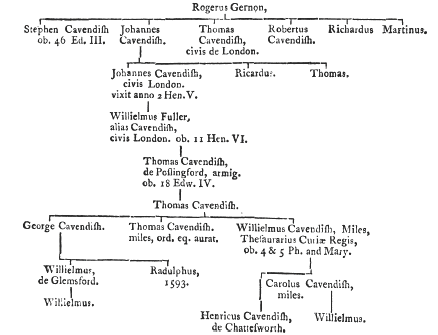No CrossRef data available.
Article contents
VII. Notices of the Manor of Cavendish, in Suffolk, and of the Cavendish Family while possessed of that Manor. By Thomas Ruggles, Esq. F.A.S.
Published online by Cambridge University Press: 24 July 2012
Extract
The various opportunities which antiquity gives the genealogist to compliment greatness at the expence of veracity are so obvious, that particular instances to prove the assertion cannot be necessary. The genealogic tree seldom bears any fruit on its branches but such as are fair to the eye of Pride, and pleasant to the palate of Greatness. The arcana of remote times are not protruded upon the view, when they are calculated to give an humble lesson to the pride of ancestry; and, were this not the case, the researches of the antiquary would not in all instances be able, with certainty, to trace a pedigree up to the original founders of families, whose first emersion from obscurity to riches or renown lies hidden by the dust of antiquity, which has been collecting for ages; were it his intention, that truth should predominate, although at the expence of vanity.
- Type
- Research Article
- Information
- Copyright
- Copyright © The Society of Antiquaries of London 1792
References
page 52 note [a] This account he probably took from Collins, in his Historical Collections of the noble families of Cavendish, Hollis, &c. published in 1752; as he asserts the same fact, and refers for authority to the manuscripts in the Cotton library sub effigie Julii, F. xi. This reference has been examined, and no such account found, but the following very imperfect sketch of the genealogy of the Cavendishes.

It is observable that none of the female line of the family are mentioned in this genealogic sketch, which has on the face of it every appearance of imperfection.
page 52 note [b] Vol. II. p. 323, in Pentlow.
page 55 note [c] Possibly, char et charretes.
page 57 note [d] It appears by a memorandum among other church-notices taken in 1694, that there then existed in Cavendish church a monumental stone, on which was this inscription, ‘Hie jacet Willielmus Fuller.’ Arms, three harts' heads caboshed, horned Or; which probably lay over the body of this William Cavendish, whose name was also Fuller, as is probable from the manuscript in the Cotton library.




